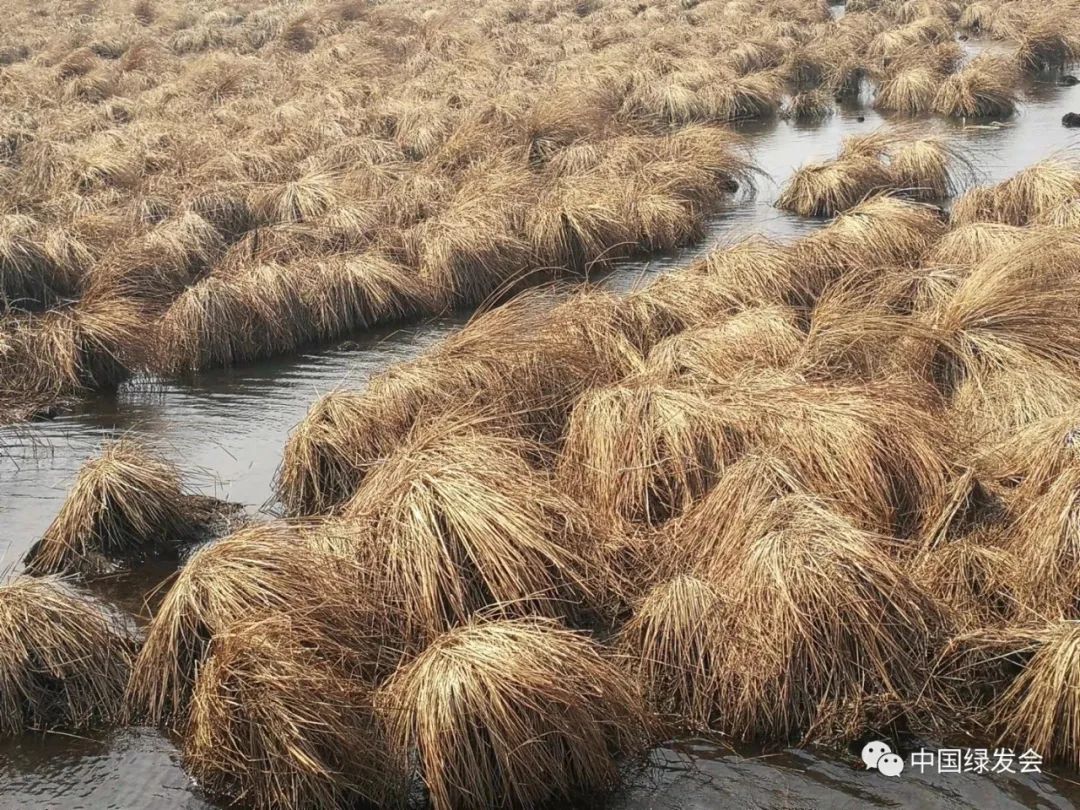I recently read a 2015 report in Jiemian News about the Baoqing wetlands in Heilongjiang, which mentioned the impact of local grazing on Tatou grass, and discussed this with Mr. Huang, a local CBCGDF volunteer, asking if the situation was now better after seven years.
“It’s now much better,” Mr. Huang said. According to his introduction, those years the wetlands were "grasslands", and almost being "desert". Later, with the popularization of the concept of ecological civilization, the local took measures to clean up tens of thousands of cattle and sheep grazing in the wetlands, and more than 100 cattle and sheep pens, and reported the development of wetlands more than 5,000 acres.
Tatou grass (Scutellaria regeliana Nakai var. ikonikovii), is a valuable natural plant “living fossil”. It is synonymous with wetland landscapes, formed over the years as a result of grasses dying and then decaying, decaying and then growing again, and then decaying and growing again. Botanists reportedly say that a towerhead mound, about 60 cm in diameter, takes thousands of years to form. In the 2015 report, a number of grazing cattle and sheep were then recklessly nibbling on this pier-like herbaceous plant that could not be restored once it was destroyed.
Natural wetland in Heilongjiang with an area of 5.56 million hectares, the fourth largest wetland area in the country, accounting for one-seventh of the country's natural wetlands, is an important breeding habitat and migratory place for rare waterfowls such as Red-crowned Crane and Oriental White Stork. At present, Heilongjiang Province has built 87 wetland-type nature reserves and established 58 national wetland parks.
“Which one is more ecologically important for geese and ducks, the Dongsheng wetland or the Qixinghe wetland?”
Mr. Huang replied, “They are two different types of wetlands with different water systems. The Qixinghe National Nature Reserve is a reed wetland, while the Dongsheng Provincial Nature Reserve is a wetland featuring Scutellaria regeliana Nakai var. ikonikovii.”
The ecological compensation mechanism was then discussed. Promoting the establishment of ecological compensation, Baoqing can make a big difference. There are four local wetlands in Baoqing, and the adjacent wetlands of Yanwo Island and Changlin Island, as well as the Naolihe National Nature Reserve are all connected.
Given this situation, Dongsheng wetlands is the top priority. Ecological compensation should be carried out in Baoqing County in a comprehensive manner.

Original Chinese article:https://mp.weixin.qq.com/s/bHiiXQbPebBcDReJNVMPYA
Translator/Samantha
Contribution
https://www.paypal.me/CBCGDFChina
http://www.cbcgdf.org/English/ConfirmDonaTion/0.html
